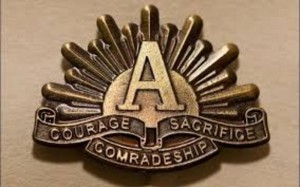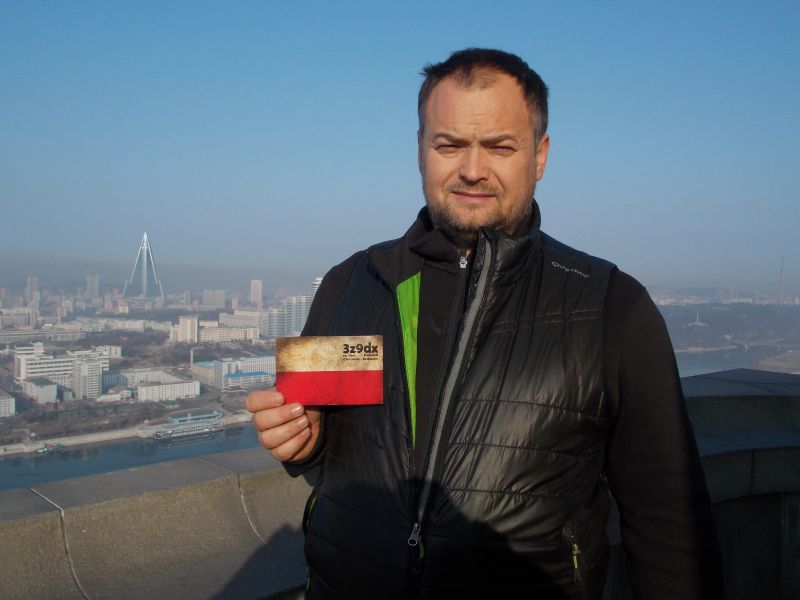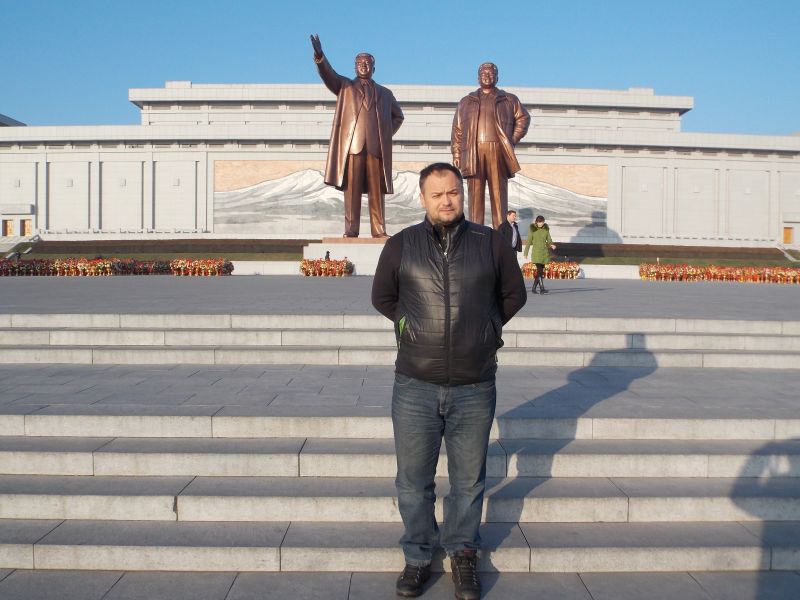
From the WIA, original post here.
Date : 21 / 12 / 2015
Author : Jim Linton – VK3PC
The Wireless Institute of Australia ran its ANZAC 100 campaign for eight months. This speech was given on December 20, through VK1WIA broadcast outlets.
Hello this is Phil Wait VK2ASD, President of the Wireless Institute of Australia. It is my honour to close what has been a most respectful commemoration of the Australian and New Zealand Army Corps – or ANZAC – battle at Gallipoli 100 years ago. That costly fight, and defeat, is part of Australia’s psyche that we particularly remember on ANZAC Day, April 25. Historians tell us that Gallipoli was the first major time that Australians fought in World War I, and their exploits and bravery have struck a chord.
The Commonwealth of Australia was formed in 1901, and it is the Gallipoli battle in 1915 that has enduringly defined us as a nation. Australia, tied to Britain, and just finding its feet as a nation having formed a Commonwealth out of six former British colonies, entered World War I when the mother country declared war on Imperial Germany and Austro-Hungary, on August 4, 1914.
Australia was quick to react, as shown by the commemoration and memorial service that took place at Fort Queenscliff in Victoria on August 5 last year. On the declaration of war, Australians fired a shot across the bows of a fleeing German ship at the Port Phillip Heads – described as the ‘first shot fired in anger in World War I’. At the invitation of the First Shot Organising Committee, the Geelong Amateur Radio Club had VI3ANZAC on air from Fort Queenscliff – where 100 years ago the German merchant ship SS Pfalz, was stopped.
In February this year the Darwin Amateur Radio Club as VI8ANZAC joined the historical re-enactment of the epic journey by Albert Chalmers Borella to enlist in World War 1. Australia responded to the German threat in the Pacific, while under control of the British Admiralty. A mixed military force, called the Australian Naval and Military Expeditionary Force, was sent to seize German New Guinea. The strategically placed part of the German colonial empire, fell in September 1914. The loss of life there included all 35 hands on the Australian E-class submarine AE1, in the fledgling RAN, presumed that it hit an uncharted reef. Its sister submarine AE2 was also involved in the recapture of German New Guinea – and more about its momentous role in the Gallipoli conflict shortly.
There were notable Australian firsts in World War I before Gallipoli. These included a land operation, aircraft, combat casualties, the loss of an RAN warship, enemy warship sinking, and the awarding of a bravery decoration. The Royal Australian Navy tells us that in the last five months of 1914, Australian forces were in a series of actions, including sweeping the Indian and Pacific Oceans of enemy warships, and seizing all German colonies in the South Pacific.
Back in Australia troops were being gathered and trained. The first convoy of ships carrying ANZAC troops left West Australia from late in 1914, with the major enemy naval threat now gone. The Southern Electronics Group VI6ANZAC joined the many re-enactments, including the origins of ANZAC Day that began in Albany. The RAN submarine, AE2, mentioned earlier in the German New Guinea capture, was sent to Gallipoli, and ordered to penetrate the narrow opening at the Dardanelles, in the Sea of Marmara. Under fire from the Dardanelles Strait the AE2 made it possible for the troops to land at Gallipoli to do battle with the Ottoman soldiers. It blocked the reinforcing and re-supplying of enemy troops at Gallipoli. The Ottoman Empire was an ally of Germany.
The story of the AE2, and the Royal Australian Navy Bridge Train, has been commemorated firstly by the callsign VI4AE2, and told by the current VI4ANZAC operation. In the ANZAC 100 program the WIA has sought to concentrate on the eight month battle at Gallipoli, from April 25, until December 20 – the ANZAC tradition. The first ANZAC landing was about 1,000 strong, but on the first day more than 620 Australians died in battle. That was repeated at many locations with more troops throughout the campaign for the Gallipoli Peninsula. The ANZAC troops faced a fierce enemy in trench warfare, and despite diversions, attacks and offensives made little headway, and the losses mounted up on both sides. What had been planned as a bold strike to put the Ottomans out of the war, became a stalemate.
On May 19, 1915 the Ottomans attacked aiming to wipe out the ANZAC beachhead – they failed with 3,000 dead – the ANZAC contingent lost 160.
The Gallipoli battle had cost ANZAC more than 11,400 lives, and heavy losses from the United Kingdom, France, and British India. The most highly decorated RAN unit in World War I was the Royal Australian Navy Bridging Train – at first building pontoon piers for supplies to go ashore, then the wharves for troops, and was among the last ANZACs to leave Gallipoli. The sad news of Gallipoli had a profound impact on Australians and New Zealanders at home, resulting in a surge of enlistments in the Australian Imperial Force.
A total of nine Victoria Crosses were earned at Gallipoli. The ANZAC campaign left a powerful legacy, the creation of the ANZAC legend, shared by Australia and New Zealand.
From it was born ANZAC Day. Every town was impacted by that war, a heavy loss of life, returned wounded, monuments erected, and avenues of honour installed to honour the ANZACs, in the war to end all wars. Each year many travel to Gallipoli, or at home attend dawn services, marches, commemorations, reunions and even two-up games with pennies. Our friend, the Telsiz Radyo Amatorleri Cemiyeti or TRAC, was there to greet us at Gallipoli this year, and had many commemorative callsign stations for the occasion of the Centenary. The commemoration equally involved the Royal Belgian Amateur Radio Union UBA, and the New Zealand Association of Radio Transmitters NZART with ZL100ANZAC. The WIA obtained the alternative AX prefix for all VK radio amateurs on April 25 and 26.
The WIA acknowledges not only the bravery of the ANZACs, but those actions that occurred before Gallipoli, and honours all Australians involved in wars and conflicts. An illustrated publication of some of the radio amateurs involved in war is to be produced by the WIA, for release on ANZAC Day 2016. The ANZAC 100 program has been under the guidance of WIA Vice President Fred Swainston VK3DAC, who has organised the enormous behind-the-scenes action necessary. This has included liaison with the Australian Communications and Media Authority on licence and rostering, and the Minister for Veterans’ Affairs on use of the protected word ‘ANZAC’.
Publicity was by Jim Linton VK3PC, broadcast on VK1WIA through Graham Kemp VK4BB, included on the website by Robert Broomhead VK3DN, run in Amateur Radio magazine though its editor Peter Freeman VK3PF, put on qrz.com by Trent Sampson VK4TS who also loaded electronic logs on the eQSL system, ClubLog and Logbook of The World.
The ANZAC-suffixed callsigns have had 50 events held throughout Australia, including VI0ANZAC twice from Casey Base in the Australian Antarctic Territory. The outstanding and most fitting ANZAC 100 events, have attracted considerable worldwide interest. In Australia the clubs and individuals involved helped make it a success – there are far too many to mention individually – a sincere thank you to all. Many ANZAC-suffixed callsigns have been taking part in the ANZAC 100 ‘last hurrah’ campaign December 12 to 20, timed with departure day from Gallipoli in 1915. From World War I to Afghanistan … Soldiers, Sailors, Airmen and Nurses. It is a pleasure to be able to pay honour via Amateur Radio, to the ANZAC spirit, and all who have served this country.
Lest We Forget.


![(posted on our facebook group, but [if my GoogleFu serves me] original image by Rick KA2BSM)](https://www.orarc.org/wp-content/uploads/2015/12/santa.jpg)



